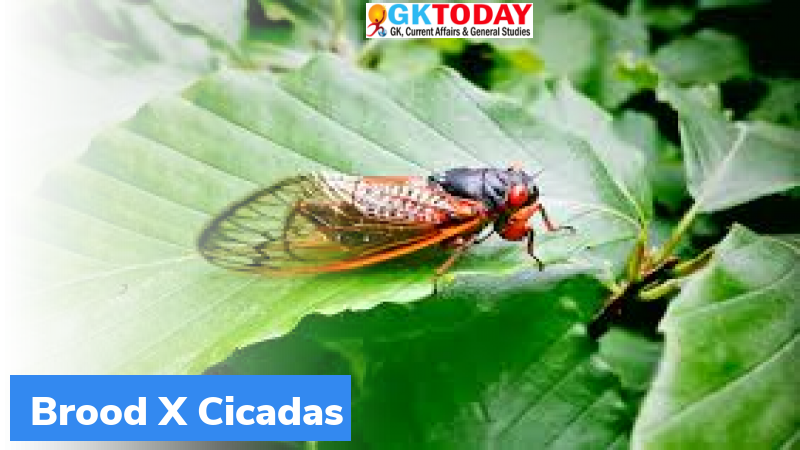What is Cicadas?
Cicadas are the world longest living insects. They are winged, red eyed insects that live underground feeding on the roots. They emerge from the underground once in 12-17 years. Recently, it has been predicted that a group of Cicadas called the “Brood X Cicadas” are to emerge across the mid-Atlantic for the first time since 2004.
History of Cicadas
In 1634, pilgrims in Massachusetts witnessed the insects springing from the earth. They called them to “locusts” as they emerged in swarms. However, they are not harmful like that of locusts. This is because they mainly feed on tree leaves. This was the first written record of Cicadas. Around seven species of Cicadas emerge every 13 to 17 years in the East coast and mid west of the US.
Brood X
Brood X are the biggest of the fifteen known Cicadas. They are now to emerge in Ohio, Indiana, Maryland, Washington DC, Indiana. Cicadas molt as they emerge from underground. Molt is to shed skin or hair or feathers paving way for the new growth. The molts add up nutrients to he soil. The total biomass of cicadas is greater then the biomass of cattle the area can support if it were to turned into pastures.
There are more than three thousand Cicadas on the earth. However, only seven are periodical. Some believe that the long underground periods are to avoid predators.
Cicadas
As they emerge from the underground, they live in trees feeding on leaves. The desert Cicadas regulate their body temperatures by evaporative cooling. Evaporative coiling is similar to sweating.
Month: Current Affairs - May, 2021


